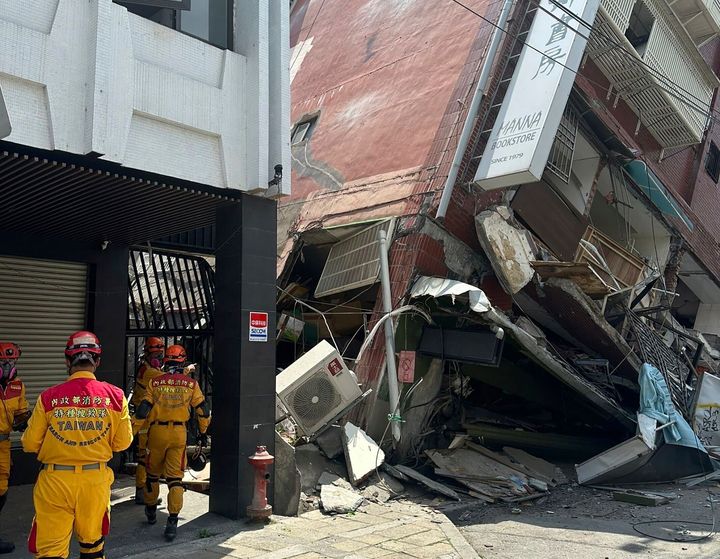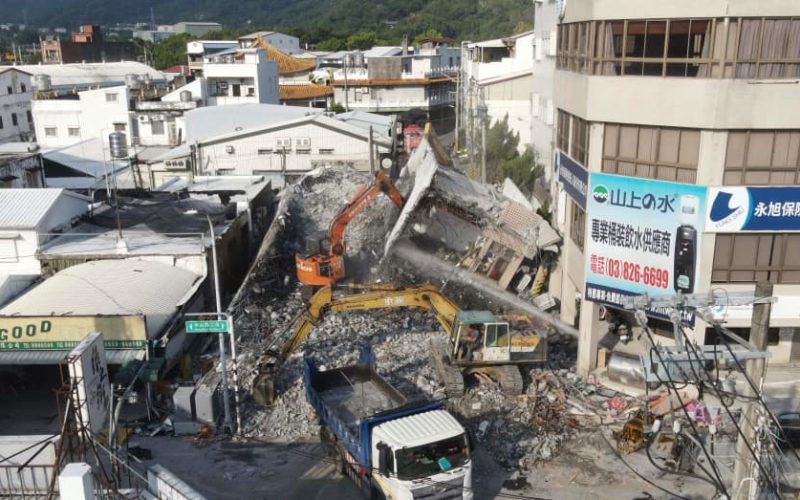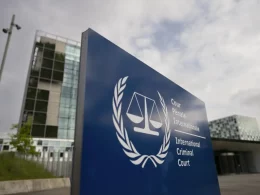Meet Sophia Blake:
Sophia Blake is a seasoned geologist with a passion for natural disasters and their impact on communities. Having spent years researching earthquakes in Asia, she offers a unique perspective on the recent events in Taiwan.
Headings:
- The Ground Rumbles: Taiwan’s Devastating Earthquake
- Understanding the Quake: Magnitude, Location, and Impact
- A Community in Crisis: Rescue Efforts and Rebuilding
- Learning from the Past: Earthquake Preparedness in Taiwan
- Beyond Taiwan: Global Implications and Seismic Activity
- Taiwan’s Strength: Resilience and Rebuilding Hope
The Ground Rumbles: Taiwan’s Devastating Earthquake
The earth rumbled beneath Taiwan on April 3rd, 2024, unleashing the island nation’s most powerful earthquake in nearly a quarter-century. This powerful tremor, registering a staggering 7.4 on the Moment magnitude scale (Mw), sent shockwaves through the nation, leaving a trail of destruction and triggering a massive relief effort.
Understanding the Quake: Magnitude, Location, and Impact
The epicenter of the earthquake struck roughly 18 kilometers south-southwest of Hualien City, on Taiwan’s eastern coast. This region is particularly susceptible to seismic activity due to its location near the junction of several tectonic plates. The sheer force of the quake caused widespread damage, particularly in Hualien County. Buildings crumbled, roads buckled, and landslides ripped through the mountainous landscape.
The initial reports painted a grim picture. Sadly, at least nine lives were tragically lost, and over 900 individuals sustained injuries. Many remained trapped in collapsed structures or buried under debris, highlighting the urgency of rescue efforts. The tremor also triggered a tsunami warning for Taiwan and nearby regions, though it was thankfully later lifted.

A Community in Crisis: Rescue Efforts and Rebuilding
In the immediate aftermath of the earthquake, Taiwan’s emergency response teams sprang into action. Rescue workers tirelessly combed through the wreckage, searching for survivors and providing medical attention to the injured. The military was also swiftly deployed to assist in search and rescue operations, their expertise proving invaluable in navigating the perilous terrain.
The focus then shifted towards securing essential resources and providing shelter for thousands displaced by the quake. Temporary housing units were set up, and local communities rallied to offer food and support to those in need. The outpouring of compassion and solidarity from both within Taiwan and around the world served as a beacon of hope in this moment of crisis.
Rebuilding the devastated infrastructure will be a long and arduous process. Homes, businesses, and vital transportation networks require extensive repairs or complete reconstruction. The Taiwanese government has pledged its full support in this endeavor, allocating significant resources to expedite the recovery process.
Learning from the Past: Earthquake Preparedness in Taiwan
Taiwan is no stranger to earthquakes. The devastating 1999 Jiji earthquake, which claimed over 2,400 lives, serves as a stark reminder of the island nation’s vulnerability. In the aftermath of that tragedy, Taiwan implemented stringent building codes and invested heavily in earthquake preparedness initiatives. These proactive measures undoubtedly played a crucial role in limiting casualties and damage from the recent tremor.
Public education programs have also been instrumental in raising awareness and promoting safety measures. Residents are encouraged to familiarize themselves with earthquake drills and evacuation procedures. Securing furniture, storing emergency supplies, and understanding safe zones within structures are all vital components of earthquake preparedness.

Beyond Taiwan: Global Implications and Seismic Activity
The recent earthquake in Taiwan serves as a stark reminder that earthquakes are a global phenomenon. Seismically active regions around the world face similar threats, highlighting the importance of preparedness across the international community. Collaborative research and knowledge sharing between nations can significantly improve our understanding of seismic activity and ultimately lead to better mitigation strategies.
Taiwan’s Strength: Resilience and Rebuilding Hope
Despite the devastation caused by the earthquake, Taiwan’s history of resilience suggests a brighter future. The island nation has faced numerous challenges throughout its history, consistently demonstrating an unwavering spirit of determination and unity. This indomitable spirit will undoubtedly guide them through the current crisis.
The coming weeks and months will be critical for Taiwan. The focus will remain on ongoing rescue efforts, followed by the long-term task of rebuilding infrastructure and restoring normalcy to affected communities. The global community stands ready to offer assistance and support in this time of need.
Concluding Thoughts
The recent earthquake in Taiwan has undoubtedly caused immense suffering and economic hardship. However, it has also showcased the strength, courage, and resilience of the Taiwanese people. By understanding the impact of this earthquake, learning from past events, and implementing proactive measures, we can all be better prepared for future natural disasters.
Taiwan Earthquake: Key Facts
| Aspect | Description |
|---|---|
| Date | April 3, 2024 |
| Location | 18 km south-southwest of Hualien City |
| Magnitude | 7.4 Mw (Moment magnitude scale) |
| Casualties | 9 confirmed fatalities, over 900 injured |
| Most Affected Area | Hualien County, eastern Taiwan |
| Aftershocks | Multiple aftershocks exceeding 5.0 Mw reported |
Natural Disasters and Us: A Comparative Table
| Disaster Type | Recent Taiwan Earthquake | 2011 Tohoku Earthquake (Japan) |
|---|---|---|
| Magnitude | 7.4 Mw | 9.0 Mw |
| Location | Eastern Taiwan | Northeastern Honshu, Japan |
| Primary Impact | Landslides, building damage, infrastructure disruption | Tsunami, widespread devastation |
| Recovery Efforts | Ongoing rescue, reconstruction | Multi-year reconstruction, ongoing challenges |












